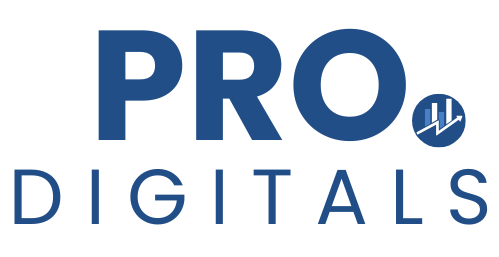A website audit isn’t just a technical deep dive—it’s a survival check. Imagine your site as a high-performance sports car. Without regular tune-ups, even the flashiest model sputters, stalls, and eventually breaks down. Slow load times? Broken links? SEO gaps? These aren’t minor annoyances. They’re conversion killers.
A comprehensive website audit checklist is your diagnostic tool. It uncovers hidden flaws, optimizes performance, and ensures your digital presence doesn’t just exist—it thrives. Whether you’re a developer fine-tuning backend quirks, a marketer chasing higher rankings, or a business owner safeguarding revenue, this guide delivers actionable steps without drowning you in jargon.
Why a Website Audit Checklist is Non-Negotiable
Websites aren’t set-and-forget assets. They’re living ecosystems. Ignore them, and decay sets in. Broken links multiply. SEO rankings plummet. User experience tanks. Here’s why audits are critical:
- User Experience (UX): A site that’s harder to navigate than a hedge maze at midnight loses visitors in seconds.
- SEO Health: Google’s algorithms evolve faster than viral TikTok trends. Fall behind, and your visibility evaporates.
- Security Vulnerabilities: Outdated plugins are hacker bait—like leaving your front door wide open with a “Welcome” mat for cybercriminals.
- Conversion Leaks: If your checkout process confuses users more than tax forms, revenue slips away silently.
A checklist isn’t optional. It’s your blueprint for consistency, ensuring no critical detail gets overlooked.
The Definitive Website Audit Checklist
1. Technical SEO: The Foundation of Visibility
Technical SEO isn’t glamorous, but it’s the bedrock of search performance. Skip it, and your site becomes a digital ghost town.
- Crawlability: Use Screaming Frog or Google Search Console. If search engines can’t crawl your site, you’re invisible.
- Indexing Errors: Check for
robots.txtblocks or roguenoindextags. Missing pages? That’s like hiding your best products in a locked closet. - Load Speed: Tools like PageSpeed Insights reveal if your site moves at dial-up speed. Under 3 seconds is the benchmark—anything slower frustrates users.
- Mobile Optimization: Google’s mobile-first indexing means a non-responsive design tanks rankings. Test with Google’s Mobile-Friendly Tool.
- Structured Data: Schema markup boosts rich snippets. Ignore it, and you’re surrendering prime SERP real estate.
2. On-Page SEO: The Art of Engagement
On-page elements dictate rankings and user behavior.
- Title Tags & Meta Descriptions: Keep titles under 60 characters. Meta descriptions? Think elevator pitch—concise and compelling.
- Header Hierarchy: H1s are your headline. H2s and H3s organize content. No structure? Readers flee like a bad movie plot.
- Keyword Integration: Keywords should flow naturally. Stuffing them in feels as forced as a laugh track in a drama.
- Internal Links: Broken links erode trust. Fix them before they pile up like unread emails.
- Content Depth: Thin content ranks poorly. Aim for substance—like a gourmet meal, not fast food.
3. Content Quality: Beyond Buzzwords
“Content is king” only if it’s not a court jester.
- Relevance: Does your blog still address audience pain points? If not, it’s digital clutter.
- Engagement: High bounce rates? Your content might be as gripping as a terms-and-conditions page.
- CTAs: Clear calls-to-action guide users. Missing them is like hosting a party but forgetting to invite guests inside.
- Multimedia: Optimize images and videos. A 10MB background image tests patience faster than a slow elevator.
4. UX & Design: The Silent Salesperson
Design isn’t just aesthetics—it’s functionality in disguise.
- Navigation: Menus should be intuitive. If users need a treasure map to find your contact page, redesign it.
- Readability: Tiny fonts or dense paragraphs? Break text into digestible chunks.
- Consistency: Inconsistent branding feels amateurish—like wearing mismatched socks to a job interview.
- Accessibility: Overlook ADA compliance, and you exclude 26% of adults with disabilities.
5. Security: The Digital Moar
A hacked site is a PR nightmare.
- SSL Certificates: HTTP sites get flagged as “Not Secure.” Upgrade to HTTPS—it’s non-negotiable.
- Software Updates: Outdated CMS platforms are hacker playgrounds. Update like your revenue depends on it (because it does).
- Backups: No backups? Hope you enjoy rebuilding your site from memory.
- Malware Scans: Tools like Sucuri or Wordfence detect threats before they wreak havoc.
6. Performance: Speed Equals Revenue
Slow sites lose users and revenue.
- Server Response: Laggy hosting? Upgrade before visitors abandon ship.
- Image Compression: Use tools like TinyPNG. Unoptimized images are speed bumps.
- Caching: Browser caching cuts load times for repeat visitors.
- Code Minification: Bloated CSS/JS files slow performance. Trim the fat.
7. Conversion Rate Optimization (CRO): The Money Maker
Traffic without conversions is like a packed store with no sales.
- Landing Pages: Cluttered layouts confuse users. Keep them focused.
- Forms: Reduce fields. Every extra field drops conversions like a bad habit.
- Trust Signals: Reviews and badges build credibility. Without them, skepticism lingers.
- A/B Testing: Experiment relentlessly. Guesswork has no place in optimization.
Automation: Your Audit Sidekick
Manual audits are tedious. Leverage these tools:
- Google Analytics: Tracks traffic sources, bounce rates, and user paths.
- SEMrush/Ahrefs: Uncovers SEO gaps and backlink profiles.
- Hotjar: Heatmaps reveal where users click (or rage-quit).
- Uptime Robot: Alerts you to downtime before customers notice.
The Unspoken Truth About Audits
A comprehensive website audit checklist isn’t a one-and-done task. It’s a rhythm. Quarterly audits keep your site sharp. Annual ones? That’s like changing your oil every 50,000 miles—disastrous.
Neglect audits, and problems compound. Fix them early, and your site hums like a precision engine.
Now, grab your checklist. Your website’s future depends on it. 🚀


